Samangad Fort
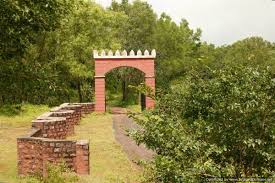
Nestled in Maharashtra’s Kolhapur district, Samangad Fort stands as a symbol of strength and resilience. Perched atop a hill, this historic fortress has witnessed countless battles and served as a strategic defense point for warriors of the past. Its origins date back centuries, with Chhatrapati Shivaji Maharaj once reinforcing its defenses to protect the Maratha empire.
The fort’s rugged stone walls, hidden tunnels, and breathtaking views of the lush Sahyadri ranges make it a fascinating destination for history enthusiasts and trekkers alike. Legends of valor echo through its ruins, narrating tales of bravery and strategic brilliance. The tranquility surrounding the fort contrasts its eventful past, offering visitors a chance to explore both history and nature.
A visit to Samangad Fort is more than just a trek—it’s an immersive journey into Maharashtra’s rich heritage, where every stone whispers stories of courage and grandeur.
History of Samangad Fort
Samangad Fort holds a significant place in Maratha history and has witnessed multiple rulers and battles throughout its long and storied existence. Historical records suggest that the fort dates back to the Yadava dynasty (12th-14th century), when it was built as a defensive stronghold to safeguard the surrounding territories. The fort’s elevated position made it an ideal site for military defense, allowing rulers to keep watch over the region and protect trade routes.
Rule of the Bahamani Sultanate and Adilshahi Dynasty
During the late medieval period, the fort came under the control of the Bahamani Sultanate, which ruled over vast regions of the Deccan. With the eventual decline of the Bahamanis, the fort was taken over by the Adilshahi dynasty of Bijapur, one of the most powerful kingdoms in southern India at the time. The Adilshahis used Samangad Fort as a strategic military outpost to guard their northern frontiers against invasions from the Mughals and the rising Maratha power.
Shivaji Maharaj’s Conquest and Strengthening of Samangad
The true significance of Samangad Fort emerged in the 17th century, when Chhatrapati Shivaji Maharaj recognized its strategic importance and decided to bring it under his control. Understanding the need for strong fortifications to expand and defend his empire, Shivaji Maharaj launched a well-planned campaign and successfully captured the fort from the Adilshahi forces.
After gaining control of Samangad, Shivaji Maharaj reinforced its defenses, ensuring it could withstand prolonged sieges. He strengthened the bastions, walls, and gates, making the fort almost impenetrable. The fort was integrated into his extensive network of hill forts across Maharashtra and Karnataka, which played a crucial role in his legendary guerrilla warfare tactics. Samangad Fort became a key fort in the Maratha defense strategy, allowing them to monitor enemy movements and launch surprise attacks on the Mughals and Adilshahis.
Battles and Strategic Importance
Throughout Shivaji Maharaj’s reign, Samangad Fort was involved in multiple conflicts and sieges, often serving as a refuge for Maratha forces during military campaigns. The fort played a vital role in repelling Mughal advances into the Deccan, and its elevated position made it an essential part of the Maratha kingdom’s western defenses.
Following Shivaji Maharaj’s reign, the fort remained under the control of the Maratha Empire, passing through the hands of Sambhaji Maharaj and later the Peshwas. During the 18th and early 19th centuries, as the Marathas engaged in conflicts with the British East India Company, Samangad continued to serve as a strategic military base.
he British Era and Decline
With the rise of the British East India Company in the 18th and 19th centuries, the Marathas faced increasing resistance and territorial losses as the British expanded their control over India. After a series of conflicts, including the Anglo-Maratha Wars, the Marathas were gradually weakened, leading to the fall of several forts, including Samangad Fort.
The British forces, equipped with superior artillery and modern military strategies, captured Samangad Fort, diminishing its military significance. With the advent of cannons and long-range weaponry, traditional hill forts like Samangad Fort became less effective for defense. The British saw little use for such forts in their administrative structure, leading to neglect and gradual abandonment. Over time, Samangad Fort, once a powerful bastion of resistance, fell into ruins, with nature reclaiming parts of its grand architecture.
Legacy and Present Condition
Despite its decline, Samangad Fort remains a symbol of Maratha bravery, strategic acumen, and military ingenuity. Today, its strong stone walls, hidden tunnels, bastions, and ancient water reservoirs stand as silent witnesses to its glorious past. Though parts of the fort have crumbled, the spirit of the warriors who once defended it still echoes through its ruins.
For history enthusiasts, visiting Samangad Fort is like stepping back in time, walking through the very pathways where legendary Maratha warriors strategized and fought to protect their land. The weathered structures, secret tunnels, and ancient temples add to the mystical charm of the fort, offering a glimpse into the architectural brilliance and warfare strategies of the Marathas.
Today, efforts are being made by local historians and heritage conservation groups to preserve and restore parts of the fort. Tourists and trekkers visiting Samangad Fort can explore its breathtaking landscapes, historical significance, and cultural richness, making it an unforgettable experience for history lovers, adventure seekers, and photographers alike.
Whether you are a history buff, a trekking enthusiast, or someone who enjoys serene landscapes, Samangad Fort offers a journey through history and heritage, standing tall as a testament to the indomitable spirit of the Marathas.
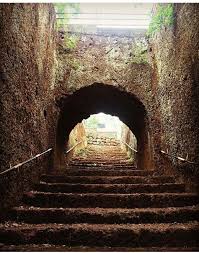
Architecture and Key Attractions
The fortification of Samangad Fort is impressive, with strong stone walls, watchtowers, and hidden tunnels that reflect the advanced military planning of the Marathas. Each structure within the fort has a unique significance and showcases the craftsmanship of the era. Some of the key attractions of the fort include:
- Massive Fort Walls: The fort is surrounded by strong and tall stone walls that were designed to withstand enemy attacks. These walls, built with massive stone blocks, display the Marathas’ engineering prowess and their focus on defense. The walls still stand tall, offering visitors a glimpse of their past strength and resilience.
- Secret Tunnels: The fort contains hidden escape routes and tunnels used during battles. These tunnels served as strategic pathways for warriors to launch surprise attacks and for the safe evacuation of important leaders. The tunnels, now partially accessible, provide insight into the fort’s smart defensive planning.
- Ancient Temples: Within the fort, one can find ancient Hindu temples that hold spiritual and historical significance. These temples were places of worship where Maratha warriors sought divine blessings before engaging in battles. The intricate carvings and sculptures on the temple walls reflect the architectural brilliance of the time.
- Panoramic Views: Since the fort is perched at a high altitude, it offers breathtaking views of the Sahyadri mountain ranges. On clear days, visitors can witness the stunning landscape stretching for miles, with rolling hills, lush green valleys, and nearby villages creating a picturesque scene. The fort’s location makes it a paradise for nature lovers, trekkers, and photographers looking for stunning sunrise and sunset shots.
- Water Reservoirs: The fort houses ancient water storage tanks and reservoirs, which played a crucial role in ensuring a continuous water supply during prolonged battles and sieges. These reservoirs, carved into the rocky terrain, were designed to store rainwater efficiently. Some of these tanks still contain water, showcasing the advanced water conservation techniques used by the Marathas.
- Watchtowers and Bastions: The fort has several watchtowers and bastions strategically placed to monitor enemy movements. These elevated structures provided guards with a panoramic view of the surroundings, allowing them to spot approaching enemies well in advance.
- Stone Steps and Pathways: The fort features stone staircases and pathways that connect different sections of the stronghold. These well-crafted paths make exploring the fort a unique experience, taking visitors back in time as they walk on the same routes once used by Maratha warriors.
- Ruins of Military Barracks and Storage Rooms: Scattered throughout the fort are the remnants of old military barracks, weapon storage rooms, and granaries that were once used to house soldiers and store supplies. These ruins provide insight into the fort’s role as a self-sufficient military base.
The combination of military architecture, religious sites, and scenic beauty makes Samangad Fort a must-visit destination for those interested in history, adventure, and culture.
Trekking to Samangad Fort
For adventure enthusiasts, trekking to Samangad Fort is an exciting and memorable experience. The trek is of moderate difficulty, making it accessible for both beginners and experienced trekkers. The route is filled with lush greenery, rugged terrains, and rocky paths, offering a perfect blend of adventure and nature. During the monsoon and winter seasons, the surroundings become even more picturesque, with misty trails and fresh air enhancing the overall trekking experience.
Trekking Details:
- Starting Point: The trek begins near Samangad Fort village, where visitors can park their vehicles and start their journey towards the fort.
- Difficulty Level: Moderate – involves some steep climbs but is manageable for all age groups.
- Best Time to Visit: The ideal time to trek is October to February, as the weather remains pleasant. Avoid trekking during peak summer as the heat can be intense.
- Duration: It takes approximately 1.5 to 2 hours to reach the top, depending on individual fitness levels and pace.
- Things to Carry: A water bottle to stay hydrated, sturdy trekking shoes for better grip, snacks, a first-aid kit, a raincoat (if visiting during monsoon), and a flashlight if you plan to start early or return late.
- Wildlife and Flora: Trekkers might spot various birds, small mammals, and unique flora along the way, adding to the charm of the journey.
The trek rewards adventurers with stunning sunrise and sunset views from the top, making it an unforgettable experience. The cool breeze and serene atmosphere at the summit provide a much-needed escape from urban life.
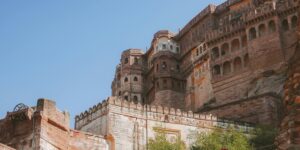
How to Reach Samangad Fort
Samangad Fort is easily accessible from various parts of Maharashtra, making it a convenient destination for history enthusiasts and adventure seekers.
By Road
- From Kolhapur: The fort is located approximately 30 km from Kolhapur, and visitors can reach it via private vehicles, taxis, or state transport buses. The road leading to the base village is well-maintained, ensuring a smooth journey.
- From Pune: Samangad Fort is about 270 km from Pune, and the best route is via NH48. The drive takes around 5-6 hours, making it a good option for weekend travelers.
- From Mumbai: The fort is 400 km from Mumbai, and travelers can take NH48 via Pune and Kolhapur. The road journey takes approximately 7-8 hours.
- Local Transport: State transport buses frequently operate between Kolhapur and the base village of Samangad, making public transport a budget-friendly option for visitors.
By Rail
- Nearest Railway Station: The closest railway station is Kolhapur Railway Station (Shahu Maharaj Terminus), located around 30 km from the fort.
- Train Connectivity: Kolhapur railway station is well-connected to major cities like Pune, Mumbai, Bengaluru, and Hyderabad through express and passenger trains.
- Further Travel: From Kolhapur railway station, visitors can hire taxis, auto-rickshaws, or board state transport buses to reach the fort.
By Air
- Nearest Airport: The closest airport is Kolhapur Airport (Chhatrapati Rajaram Maharaj Airport), located around 40 km from the fort.
- Flight Connectivity: Kolhapur Airport has regular flights from Mumbai, Pune, Bengaluru, and Hyderabad, making air travel a convenient option for tourists coming from distant locations.
- From the Airport: Visitors can hire private taxis or rental cars to reach the fort comfortably.
Additional Travel Tips
- Fuel & Vehicle Preparedness: If traveling by private vehicle, ensure your fuel tank is full before heading towards the fort, as petrol pumps and service stations are limited near the base village.
- Public Transport Planning: If relying on public transport, check bus and train schedules in advance, as services may be less frequent in rural areas, especially during early mornings or late evenings.
- Local Guides & Navigation: Local guides can be hired near the fort’s entrance for deeper insights into its history, architecture, and hidden tunnels. They also help in navigating the best routes and viewpoints.
- Parking Facilities: Limited parking space is available near the base village, so it’s advisable to arrive early, especially on weekends or holidays, to secure a spot.
- Accommodation Nearby: If planning an overnight stay, consider booking hotels or homestays in Kolhapur or nearby towns, as accommodation options near the fort are limited.
- Mobile Connectivity & Power Banks: Network coverage can be intermittent in the region, so inform someone about your travel plans and carry a power bank for emergency charging.
- Local Cuisine & Refreshments: Visitors can explore local eateries in nearby villages offering authentic Maharashtrian cuisine, such as bhakri, zunka, and misal pav.
- Safety Precautions: While exploring, be mindful of steep trails, uneven terrain, and loose stones. Wearing sturdy trekking shoes can prevent injuries.
- Cultural Sensitivity: Many temples and heritage structures exist within the fort, so visitors should dress modestly and maintain decorum and cleanliness.
- Photography & Drone Use: While photography is permitted, check for any restrictions on drone usage, as certain areas may be off-limits for aerial photography.
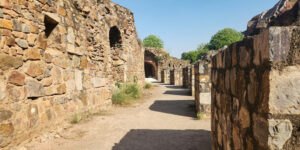
Tips for Visitors
To make your visit to Samangad Fort enjoyable and safe, keep these tips in mind:
- Start your trek early in the morning to enjoy cooler temperatures and avoid the midday heat.
- Wear comfortable and sturdy trekking shoes to ensure proper grip on rocky surfaces.
- Carry sufficient water and light snacks as there are no food stalls near the fort.
- Be cautious and watch your step, especially on steep sections of the trail.
- Respect the historical site by avoiding littering and not defacing any structures.
- Consider hiring a local guide for deeper insights into the fort’s history and significance.
- Plan your visit during weekdays to avoid large crowds and have a more peaceful experience.
- Check the weather forecast before planning your trip, as monsoon can make the trek slippery and challenging.
Best Time to Visit Samangad Fort
The ideal time to visit Samangad Fort is during the post-monsoon and winter months, as the weather is pleasant and the surrounding landscapes are at their most scenic.
October to February (Post-Monsoon & Winter)
- The best time to visit, as the weather remains cool and comfortable, with temperatures ranging from 15°C to 25°C.
- The fort is surrounded by lush greenery after the monsoon, offering breathtaking views of the Sahyadri mountain ranges.
- Ideal for trekking and photography, as visibility is clear, and the cool climate makes the hike more enjoyable.
March to June (Summer)
- Summers can be hot and dry, with temperatures reaching 30°C to 38°C.
- The fort can still be visited, but trekking during midday is not advisable due to the heat.
- It’s recommended to carry plenty of water and start the trek early in the morning.
July to September (Monsoon)
- The monsoon season brings heavy rainfall, making the fort and trekking paths slippery and challenging.
- The fort offers a mystical experience with foggy surroundings and waterfalls, but caution is advised due to the risk of leech bites and landslides.
- Not recommended for those unfamiliar with trekking in wet and rocky terrains.
Travel Tips Based on the Season
Winter (October to February)
- Carry a light jacket or sweater, as the early mornings and evenings can be chilly, especially at higher altitudes.
- The weather is pleasant and ideal for trekking, but temperatures can drop, so it’s best to dress in layers.
- The clear skies and cool breeze make it the perfect season for photography, so don’t forget to carry a camera or smartphone to capture the breathtaking views.
- If camping overnight near the fort, bring warm blankets and sleeping bags to stay comfortable.
Summer (March to June)
- Wear light cotton clothes to stay cool and comfortable during the trek.
- A cap or hat is essential to protect yourself from the harsh sun.
- Apply sunscreen (SPF 30+) to prevent sunburn, especially during midday hikes.
- Carry plenty of water to stay hydrated, as temperatures can reach 30°C to 38°C.
- Start your trek early in the morning or late in the afternoon to avoid the extreme heat of midday.
- Take sunglasses to protect your eyes from glare while trekking in open areas.
Monsoon (July to September)
- Wear waterproof trekking shoes with a strong grip to navigate slippery and muddy paths.
- Carry rain gear such as a raincoat or poncho, as the monsoon brings heavy rainfall.
- The fort looks stunning with lush greenery, mist, and waterfalls, but be cautious of leech bites and landslides.
- Avoid trekking during heavy downpours as visibility may be low and trails become dangerous.
- Pack a plastic cover or waterproof bag to protect your electronic gadgets, documents, and other valuables.
- If traveling by road, check for weather updates and possible road closures due to flooding or landslides.
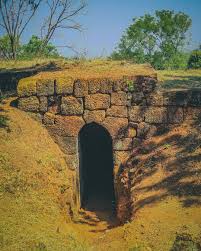
General Travel Tips
- Best Time to Visit: October to February offers the most comfortable weather for exploring the fort.
- Local Guide: Hiring a guide can enhance your experience with historical insights and ensure you take the safest routes.
- Snacks & Water: Carry energy bars, dry fruits, and snacks to stay energized throughout the trek.
- Mobile Connectivity: Network coverage can be weak in some areas, so inform someone about your travel plans before trekking.
- Respect the Environment: Avoid littering, carry your waste back, and respect the historical significance of the fort.
- Emergency Kit: Keep a small first-aid kit with basic medications, antiseptic, and bandages for any minor injuries.
By following these tips, visitors can have a
Conclusion
Samangad Fort is not just a historical landmark; it is a place where the echoes of Maratha bravery still resonate. Whether you are a history buff, a trekking enthusiast, or someone who enjoys serene landscapes, Samangad Fort offers an unforgettable experience. Walking through its ancient walls, one can almost hear the whispers of warriors who once defended it with their lives. Each stone and passage holds a tale of courage, determination, and strategic brilliance.
Beyond its military past, the fort’s natural beauty makes it a perfect getaway from the hustle and bustle of city life. It is an ideal spot for trekkers seeking adventure, photographers looking for breathtaking vistas, and families wanting a peaceful yet enriching experience.
As you stand at the summit, taking in the panoramic views of the Sahyadri ranges, you realize that Samangad Fort is more than just a relic of the past—it is a timeless symbol of resilience and grandeur. With its compelling history, stunning architecture, and mesmerizing surroundings, this fort remains one of Maharashtra’s hidden gems waiting to be explored. A visit to Samangad Fort is not just a journey through history, but also an inspiring experience that stays with you long after you leave its mighty walls.
Samangad Fort Map
Follow More Article

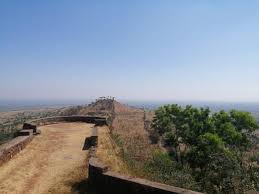





Recent Comments